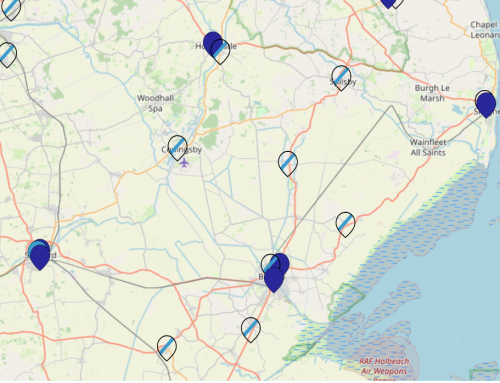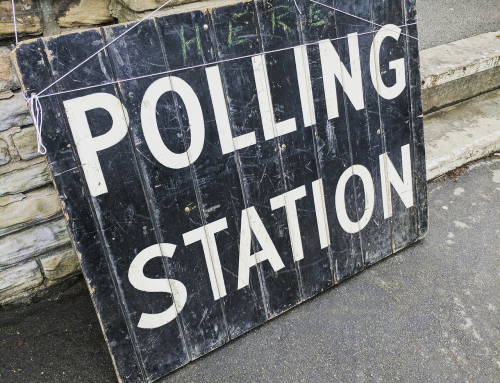 Our vice chair, Melissa Benn, spoke at the Westminster Education Forum policy conference on December 4th, at an event considering ‘England’s school system – improvement and attainment, partnerships, and the Free Schools programme.’ Here is her speech, as part of a panel debating ‘Growing the number of good and outstanding schools – the impact of partnerships, free schools and the Selective Schools Expansion Fund.’
Our vice chair, Melissa Benn, spoke at the Westminster Education Forum policy conference on December 4th, at an event considering ‘England’s school system – improvement and attainment, partnerships, and the Free Schools programme.’ Here is her speech, as part of a panel debating ‘Growing the number of good and outstanding schools – the impact of partnerships, free schools and the Selective Schools Expansion Fund.’
I am here today representing Comprehensive Future, a non party group that not only opposes the expansion of selective school places but campaigns for the phasing out of the 11-plus test altogether.
Evidence shows the test – which should really be called the 10 + given that so many children now take it at the beginning of year 6 – to be both an unreliable guide to future potential, and inherently unjust in that it so clearly advantages those from more affluent backgrounds.
In those counties such as Kent and Buckinghamshire where a fully selective system operates, local families face a form of entrenched educational apartheid that Comprehensive Future believes should have no place in our current educational system, let alone in any future one.
We are not alone in thinking this. Many research organisations from the Educational Policy Institute, to the Institute to Fiscal Studies,to Education Datalab have, in recent years, taken issue with official claims that grammar schools promote social mobility; most accept that selection depresses the educational achievement of the majority of poorer children who are subject to such a system. Many now conclude that well run comprehensive schools are likely to do a much better, and certainly more equitable, job.
Despite this shift in mainstream expert and educational opinion, selective schools have continued to expand, largely by stealth, since the 1998 School Standards and Framework Act which specifically prohibited the establishment of any new grammar schools.
Last year BBC sponsored research estimated that up to 11,000 more grammar school places – that is, enough to fill 16 average sized grammar schools – were created between 2010 and 2018, often through increases in Planned Admission Numbers at year 7, – a form of covert expansion that threatened the intake of good comprehensives locally, who found their own pupil numbers falling as a result.
In 2015, The government also supported the establishment of a controversial satellite school in Sevenoaks, Kent. Initial pledges that the site would share pupils and staff with the host school, the Weald of Kent, some ten miles away, seem not to have been kept.
Several more satellites are currently being proposed, not just in selective areas such as in Kent, but in some comprehensive areas, such as Croydon in south London, where the local Conservative candidate is pledging to fight for a grammar school in his area.
These developments form the background to a very deliberate shift in government education policy from 2016 under Theresa May’s brief premiership, with its explicit commitment to expansion and the setting up of the Selective School Expansion Fund ( SSEF) in order to help grammar schools do so, and from which many grammar schools have already benefitted.
The underlying rationale for the SSEF, and indeed for more satellites, is apparently simple:
Good and outstanding schools are a proven educational positive. Therefore logic dictates there should be more of them.
Given that most selective schools are judged to be good and outstanding, therefore there should be more of them too.
However, as I hope my opening comments make clear, this particular policy operates within a vacuum, without a clear understanding or worse perhaps, with a clear understanding of what selective school expansion means for surrounding schools.
It is true that most selective schools are rated Outstanding, although we should remember that many outstanding schools have not been visited by Ofsted for some years.
It implies no criticism of grammar school staff or students to point out, as most researchers do, that such an Ofsted judgement, or indeed a positive Progress 8 rating, is as much down to the selection of a high attaining intake as it is to the quality of teaching.
Grammar schools take low numbers of disadvantaged children, particularly longer term disadvantaged children (the figures on numbers of children on free school meals in grammars remains at 3%), have few SEN learners, no low or medium attaining pupils, low numbers of children in care, and no children from unmotivated families as these families do not enter the test process.
Of course, the government and grammar schools are acutely aware of these growing criticisms of selective schools, and in particular the widespread rejection of official claims that they promote social mobility.
So let me quickly turn to two of the chief initiatives for increasing equity within the inequitable framework of selective education.
The first is the proposal that local selective schools take neighbouring secondary moderns under their wing, and share their expertise.
However, where this has already been tried, it has clearly faltered. In 2012, the Bright Tribe trust set up by Altrincham girls grammar school in Trafford, took over Cedar Mount, a secondary in a deprived area of Manchester. The results at Cedar Mount did not improve but in fact plummeted over the following few years, and in 2017 was still judged by Ofsted to require improvement.
Barton Court grammar school in Kent took on the local Charles Dickens School and the latter’s performance has slumped to -0.89 Progress 8 rating. Sir Henry Floyd grammar school in Buckinghamshire partnered with Princes Risborough School, which now shows -0.53 progress in terms of Progress 8. Clearly, more is required to improve schools in deprived areas than simply to be partnered with a school that only selects the high attaining.
And what of the plans introduced under the SSEF for grammar schools to change their admissions policies to increase the numbers of disadvantaged pupils accessing these schools?
Of the 16 schools that were successful in the first round in the autumn of 2018, just 145 of 1,929 places (7%) were awarded to pupil premium children – and remember, the figures re children on free school meals are much lower – despite the fact that all the schools granted funds to expand supposedly offered some kind of priority to poorer pupils in their admission policies. Many schools pledged further changes to admissions policies for September 2019, but the numbers on this are not yet available.
We would expect to see some rise in the intake of children, particularly of those in receipt of the pupil premium, but monitoring by local anti-selection groups of admission policy changes already in operation suggests the resulting increases to be tiny: an addition, often, of just one or two children per year.
Those who are most likely to increase their numbers significantly will almost certainly have to lower the pass mark, as so few disadvantaged children currently pass the test. In Kent in 2018 out of 4858 pupils judged to be disadvantaged in year 6, only 258 children achieved a qualifying score in the Kent Test
To lower the pass mark not only begs questions about the very purpose and ethos of a selective school but proposals concerning quotas could well cause a backlash among more affluent parents, such as happened recently in Birmingham, where thousands signed a petition in protest at planned increases in places for children from less well- off homes.
To conclude, then, Comprehensive Future does not place much faith in what we see as cosmetic or impracticable reforms, nor do we believe that they tackle the central problem: a fundamentally retrograde selective system. Indeed, in our current polarised and fractious society, and with a severe school funding crisis, it is sad to see a government reward schools that only work for a small section of their community and show themselves unwilling to educate local children.





